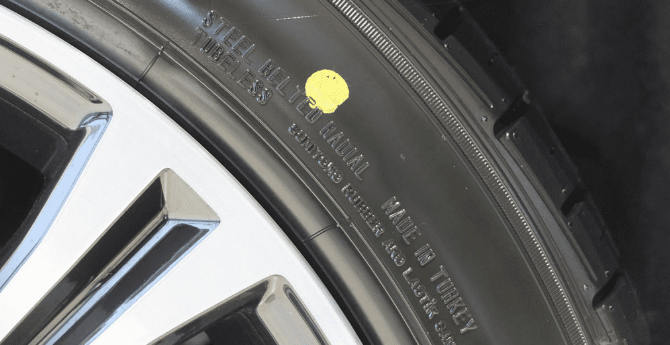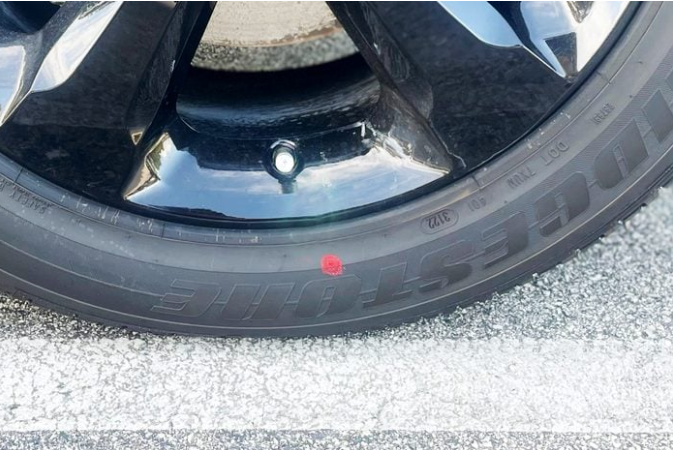What Do Yellow or Red Dots on Your Tires Mean?
Though not everyone considers themselves a car enthusiast, millions ride or drive in them every day. As a result, there are various tiny details, like red dots on your tires,...

Though not everyone considers themselves a car enthusiast, millions ride or drive in them every day. As a result, there are various tiny details, like red dots on your tires, that most people don’t understand. However, they serve an essential role.
Apparently, in fact, the reason for the red dots on your tires and yellow dots on your tires is a safety feature. It turns out that perfecting a balanced and rounded tire is nearly impossible. As a result, car manufacturers put the red and yellow dots on your tires to “identify any irregularities”. This way, technicians have a frame of reference, ensuring they can properly install and balance the tires.

Red dots on your tires indicate where the tire is the flattest. Generally, it’s located “directly across from the highest point of the wheel.” Red dots on your tires are indicative of something else. Similar to the tires, the rims aren’t typically uniform either. Therefore, many models have an additional marking at the point where the tire is also heavier or stiffer. This allows the technician to use counterweights to balance tires better.
Meanwhile, yellow dots on your tires represent the lightest point of the tire and are commonly found next to the valve stem. However, when there are both red and yellow dots on your tires, the red dot on your tires is what technicians pay attention to when balancing tires.
Just like life, it’s important for overall safety and wellbeing to achieve balance. Balanced tires are just one of many crucial elements to ensuring road safety. However, many things can cause a tire to become unbalanced. They can be too inflated or under inflated for too long, particularly on cold mornings. Tires can become unbalanced as they age and take on wear and tear.
If a car has been stationary for an extended period of time, it may have unbalanced or even flattened tires. Or a car that has hit a pothole or curb at high speeds, or just the correct angle. Check tire pressure regularly and have the wheels rotated around 5,000 miles but no longer than 8,000, although some tire manufacturers guarantee their products up to 10,000 miles.

A white dot is also another marking to look out for. It seemingly has a more confusing role. These white, yellow, or red dots on your tires aren’t mandatory and their uses vary among different tire manufacturers. As a result, it isn’t always clear what white dots mean. However, your tires’ red and yellow dots represent what’s to be expected.
An exciting note about tires with these markings is that people who rarely buy tire replacements or only new vehicles will likely not have encountered them. Some people likely haven’t paid much attention to these markings, not to mention the people who’ve never even seen them, but they do play a vital role in helping to maintain a safe driving environment for everyone on the road.
Tire balancing and alignment are crucial components of vehicle maintenance that often go overlooked by the average driver. However, understanding the purpose and significance of those colored dots on your tires can help you better appreciate the engineering that goes into ensuring a smooth, safe, and reliable ride. By staying vigilant about tire pressure, rotation, and balancing, you can help extend the life of your tires and keep yourself and others on the road protected.

